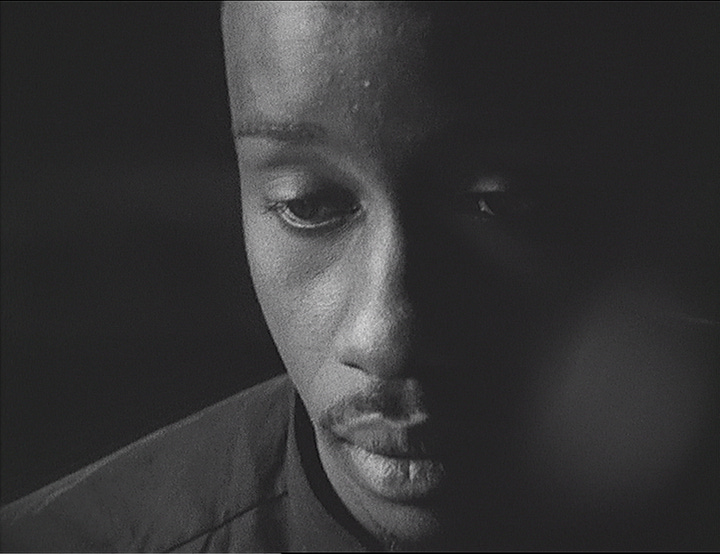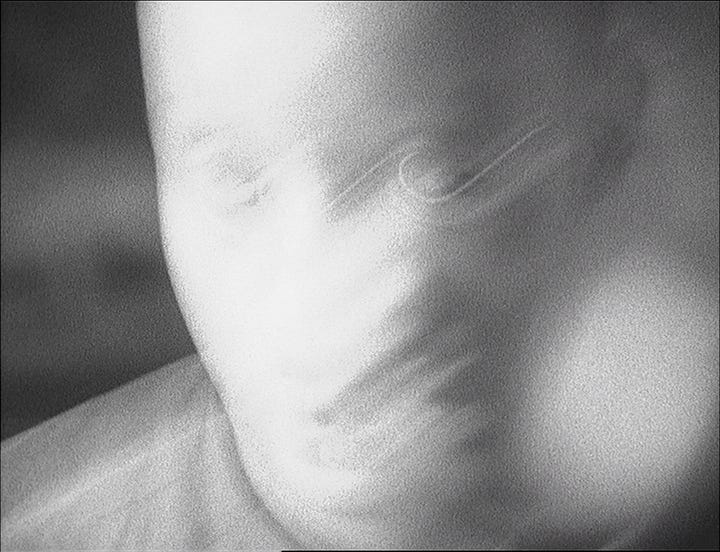Given the rampant spike of pedophilia reports in the Roman Catholic priesthood, and the total civil anarchy amok in France enthused by its over-commitment to religious pluralism (classic secularism) and Christian deconstruction, I thought it was timely to dust off my one-and-only foreign language film when I was just a spring chicken. If I recall correctly, it was actually submitted by my professor into the Johns Hopkins Film Festival after I completed it for class. The film was, and I suppose still is, a psychological commentary on the looming darkness within the hearts of ecclesial authority, especially in relation to the evanescence and corruption of innocence. Of further timeliness, two french Muslim men, from France and Senegal, play the protagonist and antagonist.
Now, before I get ahead of myself and make it sound better than it is, please bear in mind it is a student film—it was the first film I had ever shot on actual film (16mm Black & White Negative, Arriflex 16S Camera), and it was also my first foreign language film, too. The entire film, lighting included, had to be completely visualized prior to shooting. There was no digital monitor or viewfinder to reference our camera settings, no taking it to the computer to double check the look of things, and b-roll wasn’t free like in video productions, either. Everything captured through the eyepiece was it, but would obviously look very different depending on the settings. It was also film art, directed and edited in a specific genre/style, so it was not intended to be super slick or flashy or a psychological thriller. I had other videos that did just that. Visual meaning and symbolism took priority over the pacing and rhythm (a mistake, now looking back at it). Concepts are well thought through, and it has its merits, but I cannot underscore enough that it is a student project—student art no less. So set expectations low.
That said, the merits of this short film is that the symbolic imagery and meaning of the shot sequences were relatively well executed. So everything under our control was, more or less, intentional, which means the acting (facial expressions, body language, etc), blocking (actor movement and positioning), camera work, lighting, et cetera, was all purposeful and meaningfully pointed to something outside of its immediate diegetic context. In other words, the story is not about taking the viewer down a rollercoaster of experiences or telling the viewer what to believe—it wasn’t preachy by any means—it was all about giving the viewer free visual/audial range to critically analyze the symbology of the story and the contents within to draw a conclusion. Of course, the exterior scenes were far less in our control, given the array of people at the festival and the restricted budget and film roll we had to work with. Despite that, it was still relatively smooth, all things considered.
Now if you watched my demo reel, then I suspect you’ve seen the gist of it. Granted, the overarching symbolic narrative is left out of it, but it nevertheless covers the primary scene.
With all that said, I’ve been strongly considering converting my old short films to short stories because, quite frankly, the building blocks are there, but it needs to be executed better. We shall see!
Anyway. let me know what you think in the comments—hope you enjoy!
Description
Matlock Bobechko comes forth with his première fantasia and theological spectacle, The Odyssey Ecclesiastes / L’Odyssée Ecclésiaste. Papa Kane plays a priest attempting to reclaim his innocence when unexpectedly confronted by his counterpart, performed by Mohamed Thiam, as they struggle between who he wants to be in light of what is. Chiaroscuro-stylized cinematography is utilized to enlighten the spiritual mood betwixt this clash of self and soul. The Odyssey Ecclesiastes is Matlock’s first talkie film, shot on a very low-budget with strong reverence for French New Wave and Italian Neorealism. It is performed in French for an English audience.
Runtime: 11 minutes
Language: French w/ English Subtitles
Location: Towson, Maryland
Arsenal: Arriflex 16S, Kodak Double-X 7222 16mm Black & White Negative
Budget: $400.00
Year: 2011
Director Notes *Spoiler Alert*
Without spilling every detail, the themes of the film pertained to a moral juxtaposition between a will of Vanity (embodied by Whiteface) and a will of Innocence (depicted as the Youth), and struggle between moral ontology and moral epistemology. My intent was to highlight our deeper subconscious motivations and interactions between our past, present, and future selves, as well as that on-going war against the darkness of mind. I thought the Priest best represented that juxtaposition in the present tense, the Youth the past, and Whiteface the future shadow self.
Two Genres
I attempted to look like, feel like, and fuse two art film styles from the 1940-50s: French New Wave and Italian Neorealism (cinema characterized by auteurism, non-professionalism, experimentalism, and very low-budget productions). The exterior footage during the introductory credits along with elements in the montage are properties of French New Wave: off-the-cuff and rogue with eye-level camera angles, breaking the fourth wall, jump cuts within a single continuous scene, paying homage to an idiosyncratic ‘social attitude’ through camera work; whereas the interior is more so influenced from a Italian Neorealism, which in my view, tends to express more profound internal dialogue. Having said that, the film is, in a sense, a “Neowave” exposition fusing both genres’ unique properties into a mishmash of style. That is we transpose some camera work and gimmicks of French New Wave into a Neorealism setting with a self-reflexive plot structure.
Non-Diegetic Film Represents Consciousness
There are two timelines happening simultaneously: one is external and the other is internal. The camera that follows the Priest as he walks through the festival is external of the Priest, and the camera inside the church is inside the mind of the Priest. Therefore, instead of an actor acknowledging the audience’s presence from within the story space by breaking the fourth wall like a traditional French New Wave (which Whiteface did in that overtonal montage), the non-diegetic aspect of the film acknowledges its own presence and reveals to you the truth of the story through the camera’s internal stop mechanism (the mechanical effect can be seen in the photos below, it was not made in post), making the camera itself a mechanism of consciousness. This goes beyond breaking the fourth wall or plotline, it attempts to break the film wall entirely by giving the film its own voice from within the Priests' mind. That is to say, we were not granted special access to record stuff inside the Priest’s mind, the Priest is the film itself—it is his conscious and subconscious mind.


The point of recycling locations and sound effects was to emphasize that the Priest was retracing his thoughts, in order to emphasize moments occurring simultaneously. For example, the footage from the opening sequence of the Priest walking in the streets is supposed to be parallel in time to the Priest searching inside his mind for his Innocence. That is why at the end, when Whiteface slips on the bridge coat, there is a long shot framed symmetrically with the sound of church bells ringing in the distance—it is supposed to be equal to that long shot of the Priest walking toward the synthetic church steps in the introduction. This is also why the music was looped and reversed, to give that repetitive effect. In the same way, as the Priest sees his Innocence he, then, simultaneously encounters his Vanity, of which ends up conquering him. He does not full-heartedly grasp his innocence, and so his vanity wins out.
Symbolic Setting, Lighting, and Mood
The lighting is classically Rembrandt (or chiaroscuro) to represent that iconic tension between light and darkness. Every pivotal scene takes place in that main open room, where the Priest finds the Youth (his Innocence) and also speaks with Whiteface (his want, pride, lust, greed, gluttony, all in all, Vanity). This room is supposed to represent the place of conscious intent where internal dialogue and negotiations happen—as symbolized by the light pouring through the big open gap (from outside his mind) into a dark empty space (inside his mind). That is also why all the other places are more so ‘mood setting’ environments, rather than it being informative, it is intuitive. The lighting gets darker as he chases his Innocence—not because he cannot find or reach him, either, but because the film is the Priest, so he is the one causing it to get darker. The dilapidated environment is also important, which I’m sure can be gathered from the dialogue.
Art Cinema
At the time I shot this film, I thought fusing genres and styles could be a staple of Canadian Art Cinema, as we too were a mosaic and blend of various cultures (considering genre, style, and culture are inescapable of one another). But, I thought that it should be executed in a way that the style was utilized as a tool to emphasize one’s theme and film intent—so not explicitly the same style, but a proper fusion of each genres’ properties as a means to get your deeper concepts across.
Now in this case, there is no point hiding that this is clearly a student film. It was written, then shot, then edited within a three week span; it cost us less than a thousand dollars to produce, and most of that was from purchasing the 16mm negatives; actors were free and amateur, as were we, and it was also all natural lighting. My attempt was to bring about thought-provoking themes to act as a sort of catalyst to enunciate a potential course of action for Canadian Cinema, and perhaps others can take this cross-cultural ‘fusion’ concept and do it more effectively!
Matlock Bobechko | July 26, 2023 – 9:00AM EST. First produced April 2011.





Share this post